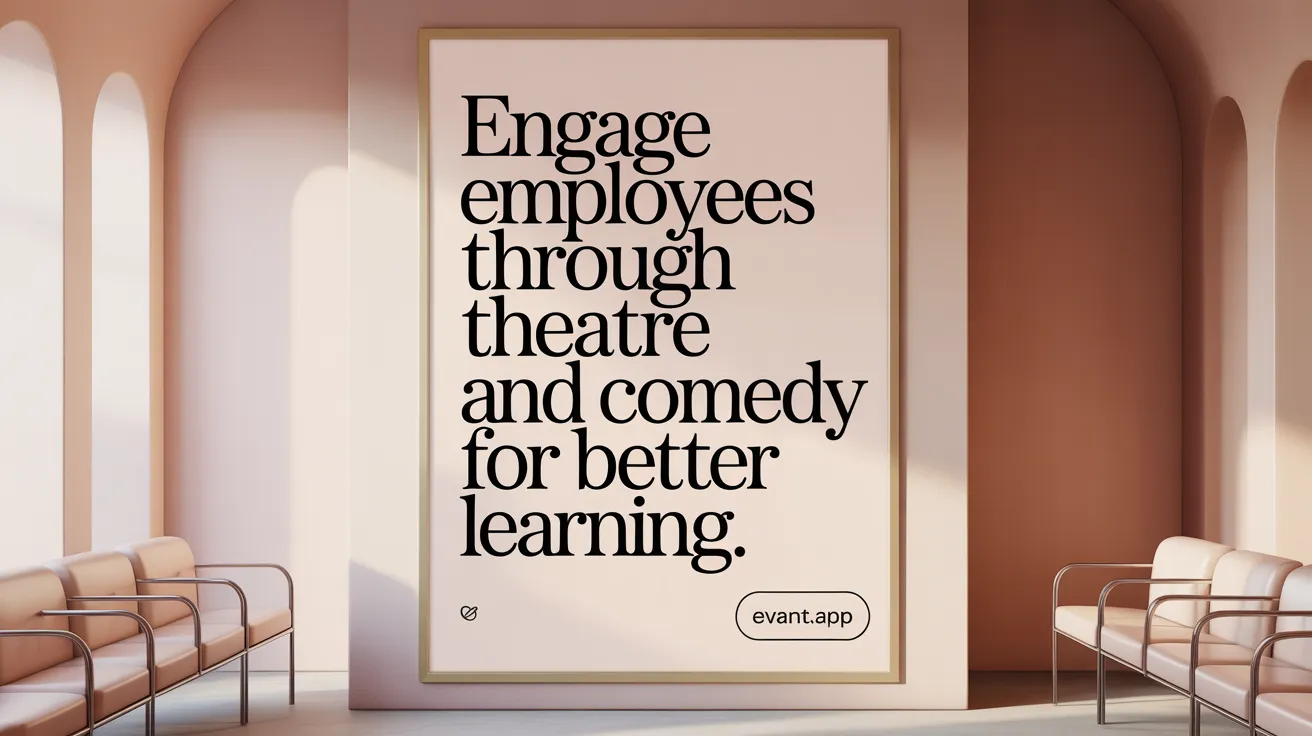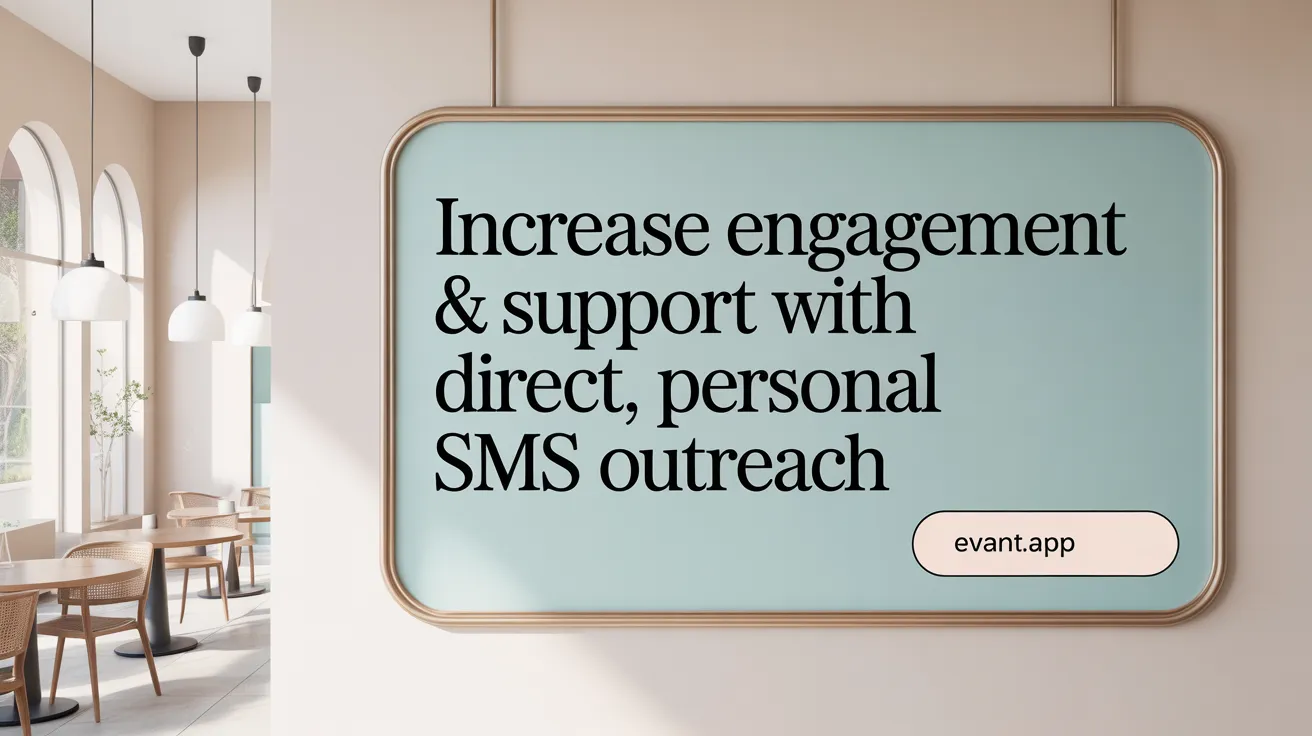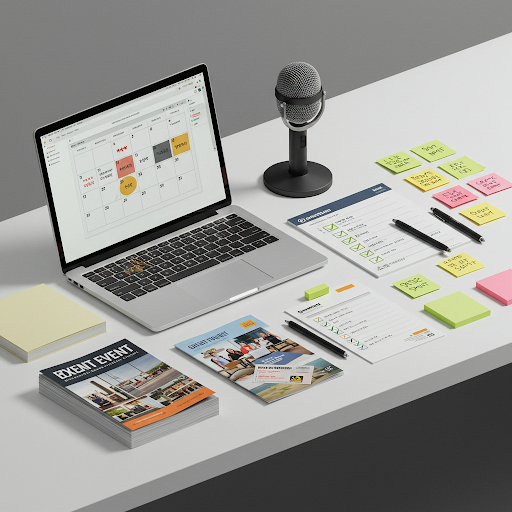Harnessing Technology for Engaged and Efficient Events
Introduction to Evant and Its Relevance for Nonprofits and Educational Organizations
Evant is a dynamic event management platform designed to enhance community engagement and streamline event logistics. Its tools enable nonprofits and educational institutions to plan, manage, and execute events that foster active participation and meaningful connections.
Event Management Challenges and the Importance of Community Engagement
Organizing events involves coordinating multiple teams, reaching diverse audiences, and ensuring smooth communication. Nonprofits and educational organizations often face additional hurdles, such as limited resources and the need to deeply engage community members. Leveraging digital platforms like Evant helps overcome these challenges by integrating communication channels, simplifying logistics, and creating inclusive environments.
Preview of Diverse Case Studies Illustrating Evant-Like Platform Benefits
Various case studies have demonstrated the power of technology to boost event success. For instance, National Grid enhanced team engagement through interactive drama-based sessions, while NBC Universal streamlined global event coordination using centralized software solutions. Community organizations, like the North Carolina Department of Transportation, increased public involvement by utilizing multi-channel digital outreach platforms. These examples underscore how digital event management tools amplify participation, improve operational efficiency, and foster stronger community bonds.
Interactive Drama and Engaging Training Elevate Corporate Events

How have event organizers used innovative methods to increase engagement in corporate events?
Organizers like NHBC all-staff conference case study and Laing O’Rourke sexual harassment training have transformed traditional corporate events by incorporating drama-based interactive sessions that combine comedy, polling theatre, and audience participation. These techniques turn complex topics into memorable and impactful experiences.
NHBC utilized a 30-minute drama session featuring professional actors in corporate training and interactive polls to explain recent claims process changes. This method reflected real workplace challenges, which made information easier to understand and retain. Likewise, Laing O’Rourke engaged 180 senior leaders with a session on challenging sexual harassment with Enact. Their drama-based approach not only communicated the serious topic effectively but also created a training on psychological safety at work space for dialogue.
Humor and relatable scenarios play a critical role in these sessions. For instance, National Grid team leader roadshows used a drama scenario involving a complaint and interactive polling, which helped participants explore inclusive behaviors while keeping the session engaging and light-hearted.
By embracing employee engagement through theatre and active audience involvement, these corporates enhance learning, improve message retention, and foster a culture of open communication, making events both educational and enjoyable.
Automated Event Management Transforms Healthcare and Large-Scale Corporate Events

What advantages do event management automation platforms offer to organizers?
Automation in event and incident management offers significant benefits by streamlining workflows, increasing speed, and enhancing accuracy. For example, Family Health Services incident reporting transformation of Darke County replaced paper-based incident reporting with a digital platform, which improved reporting speed, transparency, and compliance. Automated routing and structured data entry allowed the organization to resolve incidents in days instead of weeks, saving administrative time and improving operational efficiency (Event management automation in healthcare).
How has automation improved healthcare event management?
In healthcare, automation facilitates better data management and rapid incident resolution. The digital platform implemented by Family Health Services of Darke County enabled clearer categorization and reporting, which supported targeted interventions such as staff training. Enhanced data transparency also made root cause analysis more effective, contributing to overall safety and compliance (Automation features for healthcare reporting).
How do corporations benefit from automated event management?
Large multinational companies such as NBC Universal, Hilton, Autodesk, and Adobe have leveraged event management software platforms like Attendease to scale and simplify their event operations. These platforms centralize event and registration data, enabling efficient coordination across global teams. For instance, NBC Universal event management case study shows how they were able to launch multiple international events swiftly, while Adobe experienced substantial increases in managed events and attendance. Automation also removes reliance on paper-based systems, improves brand consistency, and supports robust event portals accessible worldwide (Event management software case studies).
What operational improvements come from centralized data management?
Centralizing event data enhances decision-making through comprehensive analytics and reporting. Corporations benefit from better visibility into attendee engagement and registration trends, while healthcare providers achieve improved tracking of incidents and follow-ups. This centralized approach reduces duplication, allows targeted communication, and enables seamless scalability as event portfolios expand (Efficiency in managing global events at Adobe, Operational performance in healthcare automation.
Together, these advancements reflect the transformative impact of automation in both healthcare incident reporting and large-scale corporate event management, driving efficiency, transparency, and growth.
SMS-Based Engagement Drives Participation and Fundraising Success

How is SMS technology enhancing event participation and nonprofit fundraising?
SMS-based engagement in nonprofit fundraising is transforming how nonprofits and organizations engage communities, boost participation, and raise funds effectively. With a remarkable 98% open rate—far surpassing email’s 18%—SMS messages ensure critical updates and calls to action reach supporters promptly and personally (see Best Practices for SMS Marketing 2025).
Key Uses of SMS in Community Outreach and Fundraising
- Interactive Engagement: WWF’s Earth Hour utilized SMS quizzes to educate and inspire global climate action, reaching record participation worldwide (WWF Earth Hour SMS Quiz.
- Appointment and Reminder Systems: Hospital Alemão Oswaldo Cruz in Brazil boosted appointment bookings by 82% through timely SMS reminders, while also reducing response times by over 60% (Hospital Alemão Oswaldo Cruz SMS Appointment Reminders.
- Community Feedback Channels: UNICEF’s U-Report mobilizes youth voices on social issues with text-based surveys, enabling two-way communication and civic engagement (UNICEF U-Report SMS Civic Engagement.
- Fundraising Campaigns: The 'Battles End' event raised more than $100,000 in a single day using SMS donation appeals, demonstrating SMS’s powerful fundraising potential (Battles End SMS Fundraising).
Benefits Realized from SMS Campaigns
Organizations experience higher engagement rates, improved conversion metrics, and streamlined communication. For instance, Cabify cut financial losses by 15% using SMS alerts (Cabify SMS Unusual Activity Alerts, and motorshowrooms saw increased test drive bookings thanks to reminder texts (XYZ Motors SMS Test Drive Reminders.
By integrating SMS-based engagement in nonprofit fundraising into event management and outreach, nonprofits can foster closer connections, drive participation, and significantly enhance fundraising outcomes through timely, direct, and interactive messaging (SMS Marketing Case Studies 2025, Text Engagement and SMS Fundraising Ideas).
Adaptive Strategies Enable Nonprofits to Sustain Engagement Amid Challenges
What adaptive approaches have nonprofits used to maintain community engagement during disruptions?
Nonprofits have shown remarkable flexibility in adapting to event disruptions and community needs, especially during crises like the pandemic. They pivoted to virtual and hybrid event formats, ensuring ongoing engagement while respecting safety precautions.
Opening Act transitioned from traditional stage performances to virtual events, creating inclusive online spaces such as the "20 Minutes of Joy" that encouraged community sharing and emotional connection. This shift emphasized clear goals around advocacy, accountability, and collective action.
The Jewish Food Society repurposed live event recordings into podcasts, maintaining their community connection through storytelling. By investing in multimedia documentation like photography and audio, they leveraged content across platforms to creatively market their initiatives, boosting visibility and engagement.
Pioneer Works focused on collaborative efforts by supporting local needs—offering tech assistance for schools, hosting virtual events, and distributing free meals. They prioritized confidence in their mission, community collaboration over competition, and involving local voices to co-create relevant, inclusive programs.
Additionally, nonprofits have enhanced their adaptability by leveraging SMS-based engagement in nonprofit fundraising to maintain contact and encourage participation despite disruptions. This includes integrating SMS RSVP systems to boost attendance and streamline communications, as detailed in how SMS RSVP benefits nonprofits and boosts community events.
These adaptive tactics showcase how nonprofits blend technology, story-driven content, and community partnerships to sustain and deepen engagement during uncertain times.
Community Engagement Through Innovative Digital Platforms Elevates Public Involvement
How do integrated digital platforms improve community engagement for public projects?
Innovative digital platforms revolutionize community engagement by offering a centralized space for real-time updates, diverse outreach methods, and transparent feedback collection. North Carolina Department of Transportation (NCDOT) exemplifies this approach using a cloud-based public engagement platform that integrates online hubs, social media, emails, and traditional media.
NCDOT’s strategy leverages mixed-mode surveys—via text, online, and in-person—ensuring broad accessibility across different communities. The platform’s dynamic project pages feature videos, interactive polls, and visuals that keep residents informed and actively involved.
Tailored outreach methods—such as radio ads, mailers, and social media—address urban and rural residents uniquely, boosting attendance and response rates. Centralized data management lets NCDOT segment participants by demographics and interests, enabling personalized follow-ups and efficient response tracking.
This multi-channel, transparent approach fostered trust during uncertain times like Hurricane Florence, rapidly increasing engagement (6,900 responses from 900+ participants) and streamlining compliance with federal reporting requirements. The platform’s efficiency enhancements allowed faster dissemination of information and improved public participation in transportation planning and project execution.
Together, these elements demonstrate how integrated digital platforms heighten community engagement by creating inclusive, transparent, and responsive public project communication systems. See the full case study on the NCDOT community engagement.
Collaborative, Experiential Learning and Collective Event Planning Foster Deeper Community Connections
How do collaborative learning and collective planning enhance event outcomes?
Collaborative experiential learning combines teamwork, reflection, and partnerships with external organizations to significantly improve engagement and outcomes.
In higher education, programs like Duke University's Bass Connections and Georgia Tech's Vertically Integrated Projects engage students across multiple disciplines in intensive projects. These initiatives build critical thinking, communication, and teamwork skills while fostering real-world problem-solving. Academic credit and structured reflection further deepen the learning process, making these projects transformative.
Similarly, nonprofit and media organizations enhance event effectiveness by pooling resources and audiences. For example, Minnesota-based MinnPost and Sahan Journal united for a World Press Freedom Day campaign, successfully raising $12,500 through coordinated social media and email efforts. The New England News Collaborative exemplifies a sustainable, multi-organizational approach to event sponsorship and audience growth.
These collaborative approaches create richer experiences, optimize resource use, and expand community reach by facilitating shared goals and expertise. Integrating teamwork and partnerships into both learning and event planning not only heightens engagement but also strengthens community ties and event impact, especially when combined with SMS-based engagement in nonprofit fundraising to boost communication and participation.
Maximizing Community Engagement: Lessons from Diverse Event Organizers
Interactive and Collaborative Content Drives Engagement
Successful event organizers like NHBC and Laing O’Rourke employed drama-based interactive sessions that encouraged audience participation, making messages clear and memorable. Incorporating humor, real-world scenarios, and active polling fosters greater attendee involvement and learning.
Automation and SMS Enhance Efficiency and Reach
The use of automation platforms, as seen in healthcare incident reporting, streamlines workflows and accelerates response times. SMS campaigns by organizations such as WWF and UNICEF empower rapid communication, increase participation, and provide inclusive channels for engagement.
Technology as a Cornerstone for Inclusion and Simplicity
Tools like cloud-based public engagement software, event management platforms like Attendease, and SMS marketing systems integrate multiple engagement channels, allowing tailored outreach and accessibility for diverse communities. These technologies also support compliance, data transparency, and efficient feedback collection.
Encouraging Adoption Among Nonprofits and Educational Institutions
Nonprofits and educational entities stand to gain by adopting integrated digital tools such as Evant for seamless event coordination, community outreach, and enhanced supporter interaction. Embracing these innovations can boost program impact and foster inclusive environments.
Inspiring Innovation Through Proven Case Studies
By studying the adaptable strategies of diverse organizations, event planners can draw inspiration to implement interactive experiences, automation, and mobile communications that elevate community engagement and streamline event management—ultimately driving greater participation and success.
Related Blogs


RSVP Tools: Best Options, Google RSVP Limitations & Why Text Wins
Michael PedoeemExplore the best RSVP tools, Google RSVP’s limitations, and why text RSVP is the most efficient for event planning with instant confirmations and reminders.


My School SMS: Bridging the Gap between Schools, Parents, and Students
Michael PedoeemMy School SMS - What's it all about


Ready to transform your community









